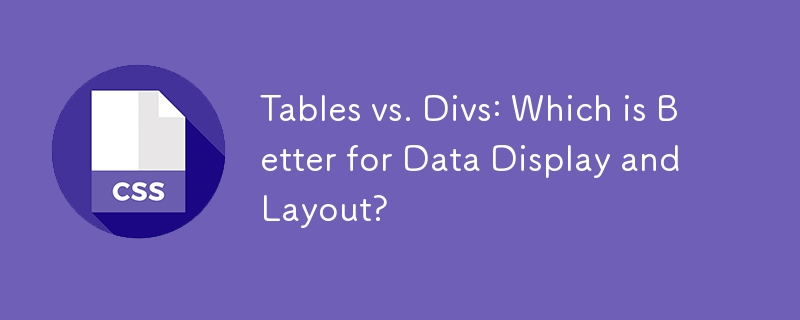element with "display: table-*" properties. Both methods can achieve similar visual results but may differ in terms of semantics, performance, and render speed.
Performance Considerations
Contrary to popular belief, rendering speed between actual tables and div tables is practically instant and negligible. The performance bottleneck typically arises from the manipulation of nested elements, particularly in JavaScript-heavy or exceptionally long pages.
Semantic Considerations
Using divs to simulate data tables is semantically incorrect. Tables are intended to organize and display tabular data, while divs are for structural layout. By aligning with proper HTML semantics, you ensure accessibility and maintainability of your code.
Layout Flexibility
The "display: table-row" and "display: table-cell" properties of divs provide greater flexibility in layout customization. They allow developers to create fluid, responsive layouts that adapt to different screen sizes and device orientations.
Conclusion
Ultimately, the choice between actual tables and div tables depends on the specific context and requirements of your application. For data representation, actual tables remain the preferred choice due to their inherent semantics. For layout purposes, "display: table-*" properties offer greater flexibility and customization options.
The above is the detailed content of Tables vs. Divs: Which is Better for Data Display and Layout?. For more information, please follow other related articles on the PHP Chinese website!
Statement:The content of this article is voluntarily contributed by netizens, and the copyright belongs to the original author. This site does not assume corresponding legal responsibility. If you find any content suspected of plagiarism or infringement, please contact admin@php.cn


